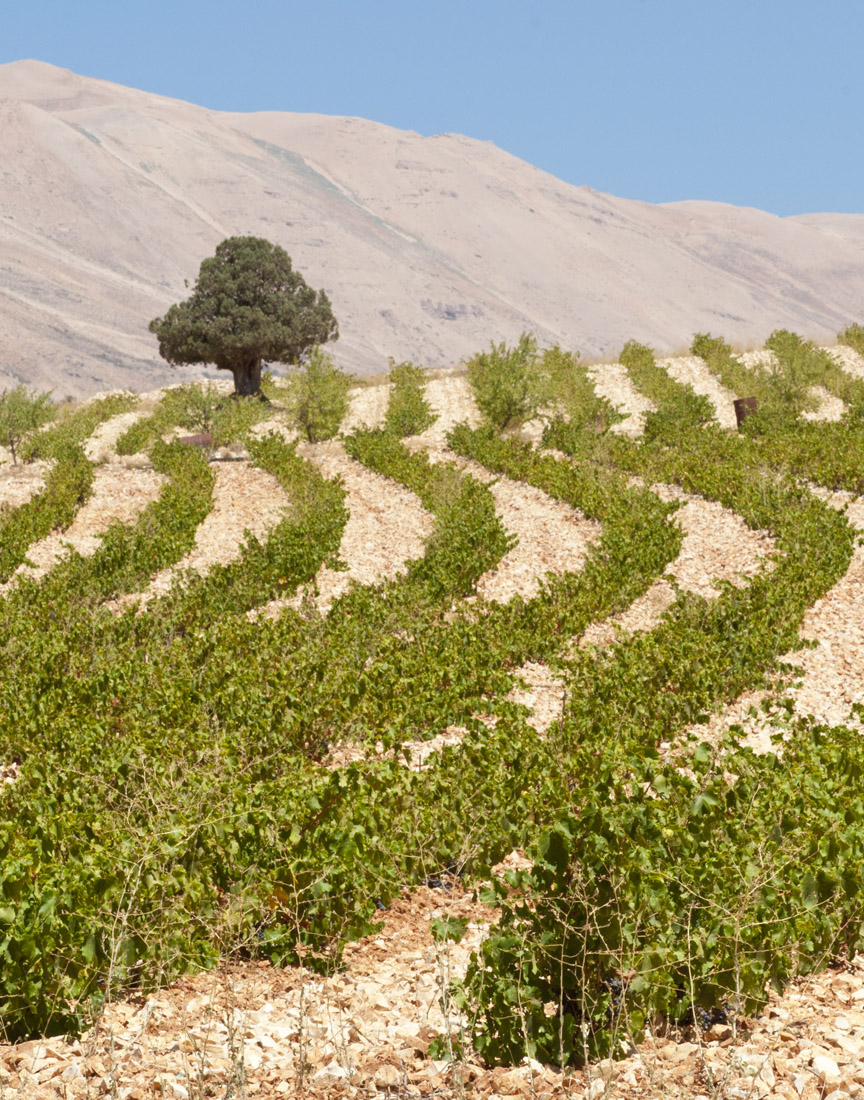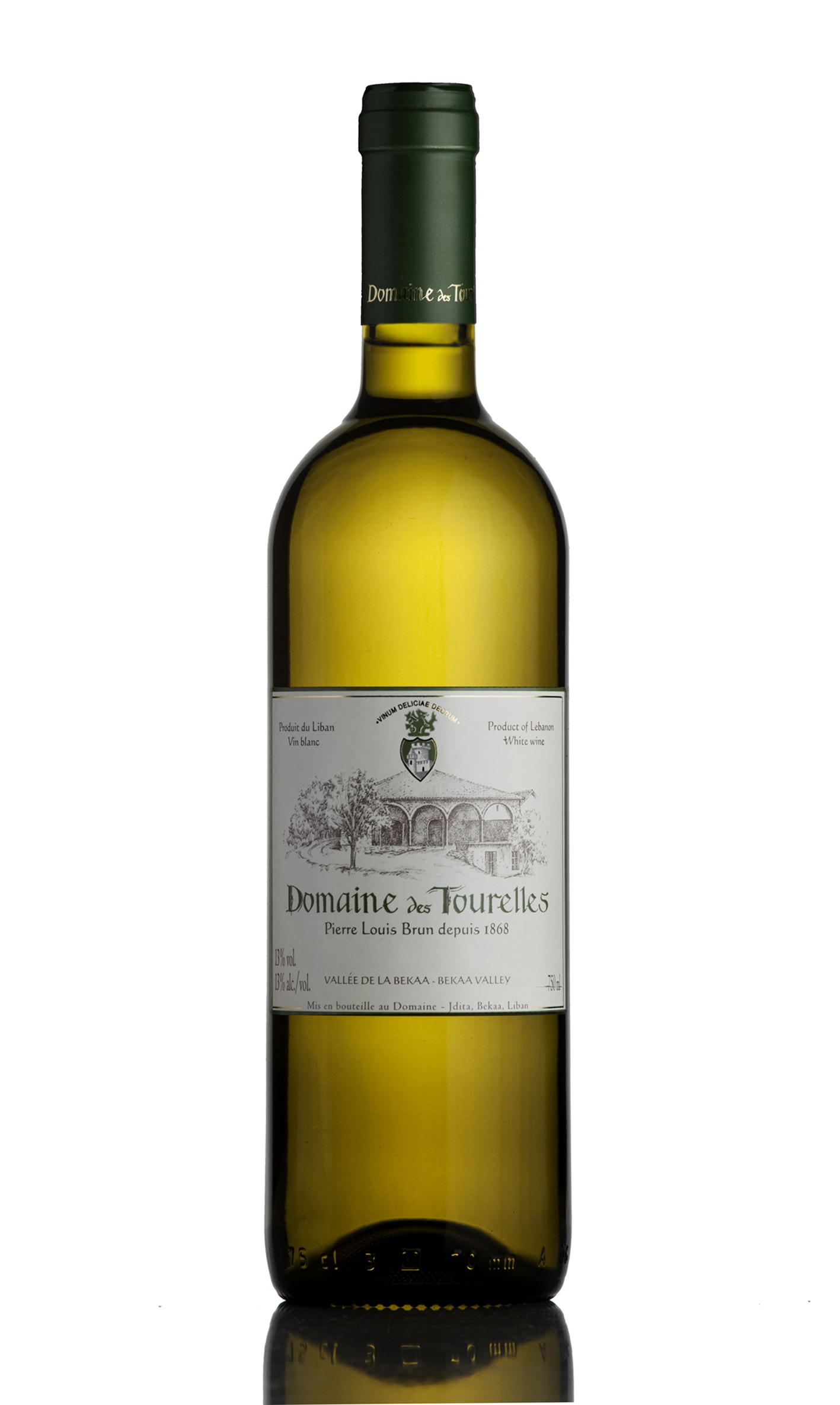
The vines of IXSIR
I am sitting in a vineyard with a Lebanese winemaker in the Bekaa Valley. It’s a glorious night: cool and starlit, with a full moon, and we are ploughing our way through the second bottle of his 2001 and smoking Italian panatelas. “You know how sometimes you want a dirty, sweaty f––k?” he says, breaking the silence and leaning to inspect the end of his cigar. “Just like sometimes you want wine that is ripe and evolved and full of character?”
He picks a strand of tobacco from his mouth. “It’s all about intervention during the growing season. The less of it, the more the wine holds within its spirit all the character of the grape, the vine, the soil and the climate, even the smell of the Bedouin woman that picks it. This is the Bekaa. Raw and untamed.”
I’m not sure all Lebanon’s winemakers would compare drinking their wines to filthy sex, but the wines can certainly get your juices flowing. In fact Lebanese wine is better than it has ever been and there is no better time to drink it. The great Chateau Musar is no longer the only show in town. Marks and Spencer in London carry three wines by Chateaux Ksara and Ka as well as Domaine des Tourelles as part of its Eastern Mediterranean range and there are at least 10 other producers whose wines are on sale in the UK. So given that Syria is now the byword for hell and mayhem, let Lebanon and its wine sell a sunnier image of the Levant. Here are my recommendations for year-round drinking.
For summer I am going for wines from northern, southern and central Lebanon. My rosé is Altitudes 2011 by Ixsir, one of northern Lebanon’s most exciting producers. Made with majority Syrah, the wine is complex, nicely rounded in the mouth, perfect acidity and a wonderful harmony between the elegant fruit on the mid palate and spice in the finish.
My white is Domaine des Tourelles’ Blanc 2011. Founded in 1868 in the Bekaa town of Chtaura, Domaine des Tourelles is Lebanon’s oldest commercial producer. The white is a blend of Chardonnay, Viognier and Muscat d’Alexandrie. It has pears and white flowers on the nose, while in the mouth there is an abundance of acidity and freshness with notes of citrus, apple and honey.
Heading south to Jezzine, we hit the Karam Winery (no relation). The Maison 2010 is a lovely, easy-drinking red made with Cabernet Sauvignon, Syrah, Merlot, and Petit Verdot. It has mineral freshness and good tannic structure with flavours of liquorice and cassis. Chill or serve at room temperature; both work.

Domaine des Tourelles Blanc 2011
Autumn is my favourite time of year. There is a lovely bite in the air to remind you that the weather is turning. Time to dust down the reds that were too heavy to drink in summer. This is where Lebanese wines made with warmer climate grapes – Syrah, Cinsault, Grenache, Carignan and Mourvedre – come into their own. Open a bottle of Massaya Selection 2008, the mid-range red from one of my favourite Lebanese wineries. It has the signature Cabernet nose of bell peppers, while in the mouth there is both intensity and freshness with intense fruit, mainly blackcurrants and cassis.
Lebanese wine wouldn’t be where it is today without Château Musar, so it would be a pity not to include one wine from this most enigmatic of producers. My choice is the entry level Cuvée 2010, a staggeringly sophisticated and complex wine for its segment. This heady mix of red fruit and spice is a great way to introduce the magic of the Bekaa’s awesome terroir.
Winter is the time for full-on reds, not over-extracted, and intelligently oaked so the tannins and the fruit move as one in the mouth. Lots to choose from here, but I would go for Château Marsyas 2009. This seriously grown up wine is a blend of Cabernet Sauvignon, Syrah, Merlot and Petit Verdot. If you want to mix it up a bit why not also serve its Syrian cousin, Bargylus 2008, and compare the Bekaa Valley’s sundrenched flavours with the wonderful minerality of the Lattakia terroir? Not everything that comes out of Syria today is bad news.
Spring is time for some gently oaked whites. My current favourites are the Chardonnays from Châteaux St Thomas and Ksara. These are wines in which the wood is supremely integrated with the fruit so you get none of the chewiness that caused Chardonnay to suffer a global ennui. There are wonderful, warm savoury notes, overlaid with citrus and honey. Both are wines that can head up a long overdue Chardonnay revival. Finally, let’s throw in a red: Châteaux Ka’s Cadet de Ka 2009 made with Cabernet Sauvignon, Merlot and Syrah is a real tub-thumper full of spice and lovely rounded berry fruits.
Michael Karam is the author of Wines of Lebanon, which won the Gourmand Award for the Best New World Wine Book 2005; Arak and Mezze: The Taste of Lebanon, which was shortlisted for the Gourmand award for Best Food and Travel Book 2007 and Michael Karam’s Lebanese Wines, whose second edition was published in November 2012.


